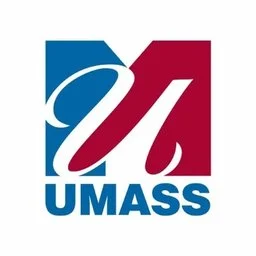Foundational Assessment and Laboratory Protocols: Understanding Importance and Frequency of Ongoing Monitoring
Foundational Assessment and Laboratory Protocols: Understanding Importance and Frequency of Ongoing Monitoring
Before starting lamotrigine therapy, assessing baseline LFTs, CBC, and renal function is crucial. Additionally, the patient’s medical history should be considered to rule out cardiovascular issues. Ongoing LFTs, CBC, and renal function monitoring is recommended due to the risk of hepatotoxicity, agranulocytosis, and renal impairment associated with lamotrigine use (Mitra-Ghosh et al., 2020).
Read MoreNURS 6630 Week 5 Assignment: De-Prescribing Example De-Prescribing
NURS 6630 Week 5 Assignment: De-Prescribing Example
De-Prescribing
De-prescribing, the systematic approach overseen by healthcare professionals to discontinue medications that are inappropriate or unnecessary, emerges as an essential strategy to optimize medication regimens, especially in complex clinical situations. With the rise of polypharmacy and medication-related adverse events, de-prescribing greatly contributes to improving patient safety, enhancing medication adherence, and lowering healthcare costs (Elbeddini et al., 2021).
Read MoreNURS 6630 Week 7 Discussion/Assignment: Patient Medication Guide Example Medication Guide for Ziprasidone: Understanding the Uses, Mechanism, and Considerations Description of the Psychopharmacological Medication Agent, and FDA Indications
NURS 6630 Week 7 Discussion/Assignment: Patient Medication Guide Example
Medication Guide for Ziprasidone: Understanding the Uses, Mechanism, and Considerations
Description of the Psychopharmacological Medication Agent, and FDA Indications
Ziprasidone, marketed under the brand name Geodon, is an atypical antipsychotic medication (also known as a second-generation antipsychotic agent). It has received FDA approval for several indications, including the treatment of schizophrenia, acute agitation associated with schizophrenia, and acute manic or mixed episodes related to bipolar disorder (Bouchette et al., 2022). These FDA-approved uses are well-established, ensuring their clinical application aligns with evidence-based guidelines. Additionally, off-label use of ziprasidone has been reported in the treatment of depression, post-traumatic stress disorder, and anxiety disorders (Bouchette et al., 2022). However, further research is needed to fully understand the drug’s role in managing these conditions.
Pharmacodynamics: Mechanism of Action and Effects
Read MoreNURS 6521 Week 9 Discussion: Women’s and Men’s Health, Infectious Disease, and Hematologic Disorders Example
NURS 6521 Week 9 Discussion: Women’s and Men’s Health, Infectious Disease, and Hematologic Disorders Example
The patient in this case study is a 46-year-old woman with a family history of breast cancer and has been up to date on yearly mammograms. She is currently having hot flashes, nocturnal sweats, and genitourinary issues. She had been feeling good up until a month ago when she went to see her gynecologist for her yearly exam and to talk about her symptoms.
Read MoreNURS 6521 Week 8 Assignment: Decision Tree for Neurological and Musculoskeletal Example Decision Tree for Neurological and Musculoskeletal Disorders
NURS 6521 Week 8 Assignment: Decision Tree for Neurological and Musculoskeletal Example
Decision Tree for Neurological and Musculoskeletal Disorders
Healthcare providers are expected to decide the diagnosis of their patients, considering the presenting symptoms and the potential comorbid and physical patient factors. The decisions should be supported by evidence from the literature (Portney, 2020). This discussion summarizes a case study on a patient with neurological and musculoskeletal symptoms and the decisions made u
Read MoreNURS 6512 Week 9 I-Human Patients Case Study: Comprehensive (Head-To-Toe) Physical Assessment Ex
NURS 6512 Week 9 I-Human Patients Case Study: Comprehensive (Head-To-Toe) Physical Assessment Ex
Read MoreN 512 Disorders Of The Immune System Final Project Final Project This assignment entails the development of a PowerPoint Presentation (PPP) on your choice of an immunodeficiency disease incorporating evidence-based practice literature and reliable electronic sources.
Example Discussion Approach
The underlying disease responsible for pneumocystis pneumonia would be Human Immunodeficiency Virus (HIV)/Acquired Immunodeficiency Syndrome (AIDS). Following the infection of the CD4 T lymphocytes, the genetic RNA code is released into the cell and is converted by the HIV produced reverse transcriptase enzyme into DNA (Cachay, 2019). The reverse transcriptase is error prone and easily mutates during the conversion of RNA to DNA (Cachay, 2019), allowing for HIV heterogeneity to develop rapidly (Hammer & McPhee, 2019).
Following the viral DNA entry into the cell’s nucleus and with help from the HIV integrase enzyme the viral DNA becomes integrated in the host chromosome (Hammer & McPhee, 2019). According to Hammer & McPhee, the integrated HIV DNA is referred to as “provirus” and depending upon the activation state of the host cell, the “provirus” could remain latent or become transcriptionally active (Hammer & McPhee, 219). When cellular activation occurs, it “triggers NF-kß which is a cytoplasmic transcription factor that migrates to the nucleus and initiates viral gene expression (Hammer & McPhee, 2019).
Read MoreExploring Social Problems in Vulnerable Populations for Social
Exploring Social Problems in Vulnerable Populations for Social
Read MoreHumanistic-Existential Psychotherapy With Other Approaches Comparing Humanistic-Existential Psychotherapy With Other Approaches Example
Humanistic-Existential Psychotherapy With Other Approaches
Comparing Humanistic-Existential Psychotherapy With Other Approaches Example
Humanistic and Existential (HE) psychotherapies were established as treatment approaches that understand individuals as a whole being and living within a socially interconnected and holistic world. These two approaches are based on understanding the human experience while focusing on the patient rather than the symptoms. Additionally, this treatment approach aims at increasing the individual’s self-understanding and self-awareness.
Read MoreState Board Nursing Practice Standards And Organizational Or Governmental Policies Associated With Healthcare Technology, Care Coordination, And Community Resources
A good national health system is the one that contributes to quality health coverage for everyone by targeting the health needs of the people and delivering universal healthcare. Health systems are, however, complex and intricate. According to WHO, governments should build an effective health system by developing national health policies that, when implemented, will significantly reduce morbidity and mortality and reduce risks and threats to health. Policies are a set of protocols that are based on the health needs, environment, and conditions. The application of policies serve as the guidelines and directives of the health system (National Association of School Nurses, 2016).
The Florida Board of Nursing also plays a significant role in licensing, monitoring, disciplining, educating, and rehabilitating its licenses to assure that nurses are fit and competent when providing healthcare services for the people of Florida. The Florida Board of Nursing also specifies the rules and regulations guiding the education process of the nurses (Robertson & Schmid, n.d.). Recently, healthcare organizations have been adopting different technologies to promote the health statuses of people with hypertension. Additionally, the rapid development and increase in the use of technology in the domains of healthcare has caused nurses to respond proactively to different experiences in the process of caring for people with hypertension.
Advanced standards of care should be certified and licensed by a national association through the board of nursing. The Florida Board of Nursing is responsible for specifying the requirements for nursing categories. The Affordable Care Act (ACA) of 2010 provides opportunities that enable nurses to create a patient-centered approach. The policy has shifted the nursing focus towards a preventive approach. The shift of the focus has been necessitated by the need to manage chronic conditions including hypertension. The Health Insurance Portability and Accountability Act (HIPAA) also significantly impacts the role of nursing. With this policy, nurses are contributing to the privacy of patients’ health information (National Association of School Nurses, 2016).
References
- Bowles, N. P., Thosar, S. S., Herzig, M. X., & Shea, S. A. (2018). Chronotherapy for hypertension. Current Hypertension Report, 20(11), 1-24. https://www.ncbi.nlm.nih.gov/pmc/articles/PMC6491046/
- Dye, C. J., Williams, J. E., & Evatt, J. H. (2015). Improving hypertension self-management with community health coaches. Health Promotion Practice, 16(2), 271-281.
- Kravetz, J. D., & Walsh, R. F. (2016). Team-based hypertension management to improve blood pressure control. Journal of Primary Care & Community Health, 7(4), 272-275.
- Lee, C. J., & Park, S. (2016). The role of home blood pressure tele-monitoring for blood pressure control. Pulse, 4(2-3), 78-84.
- Morilla, M. D., Sans, M., Casasa, A., & Gimenez, N. (2017). Implementing technology in healthcare: Insights from physicians. BMC Medical Informatics and Decision Making, 17(1), 1-9. https://pubmed.ncbi.nlm.nih.gov/28655299/
How Care Coordination And The Utilization Of Community Resources Can Be Used To Address Hypertension
How Care Coordination And The Utilization Of Community Resources Can Be Used To Address Hypertension
If every hypertensive patient was treated adequately to reach the recommendations of the clinical guidelines, it would be possible to avert more than 45,000 deaths as a result of hypertension in the United States. Note that, treating and managing hypertension and associated complications costs about $155 billion. This money comprises direct medical costs and lost productivity. Recommendations from the Community Preventive Services Task Force (Task Force) can be of great help to healthcare and public health organizations in delivering patient care whose efficacy for blood pressure management has been proven (Dye, Williams, & Evatt, 2015).
The Task Force recommends the use of team-based care to make improvements in blood pressure control. These recommendations from the Task Force are on the basis of evidence of its effectiveness in increasing the number of people with controlled blood pressure along with the reduction of systolic and diastolic blood pressure. The strength of this evidence was considered because more than 75 studies were involved. Also note that, the studies involved team-based care organized mainly with professional nurses and pharmacists collaborating with care providers and patients (Niiranen, et al., 2017).
A team-based approach to blood pressure control refers to an organizational approach consisting of a multi-disciplinary team to improve quality of care among the patients and the achievement of organizational goals (Kravetz & Walsh, 2016). The main party in a team-based approach is the patient. Other participants are primary caregivers attending the patient, and other healthcare professionals among them nurses, community health workers, pharmacists, and dieticians. Additionally, every responsibility – drug administration, follow-up activities, self-management, and adherence – is shared among the participants each according to the capabilities (Kravetz & Walsh, 2016).
Team-based approach to treatment and management of hypertension has been proved to be efficient. This efficacy was confirmed following the findings of randomized control trials (RCTs) and meta-analysis of the RCTs involving nurses and pharmacists interventions. In the interventions, the nurses achieved lower blood pressure scores and higher blood pressure goals as compared to normal approach to blood pressure control. The outcomes achieved in this study are consistent with another set of outcomes achieved at the same facility. In the second outcomes, there was lower readmission rates, higher patient satisfaction, and improved quality of care (Dye et al., 2015).
It is important that hypertensive patients are made to use community resources such as National Heart, Lung, and Blood Institute to improve their health and cope with hypertension. From this resource, patients will be regularly updated on hypertension management, therefore, improving patients’ knowledge about the condition. There is also the American Heart Association which educates people on healthy living. Additionally, American Heart Association, encourages appropriate cardiac care in an attempt to reduce deaths and disabilities as a result of stroke and other cardiovascular diseases (Kravetz & Walsh, 2016).
There exists some barriers to full utilization of community resources. These barriers include inconsistent patient follow-up and inadequate economic resources for access to other community resources. In the studies, participants report that they are financially constrained and cannot, therefore, seek medical attention. However, state and federal governments are collaborating to ensure patients have access to healthcare services and resources they need to improve their health outcomes and disease management practices (Dye et al., 2015).
Read MoreHow Healthcare Technology, Coordination Of Care, And Community Resources Can Be Applied To Address Hypertension Sample Approach
Blood pressure, sometimes referred to as hypertension, is a major medical condition that raises the risk of heart disease, renal disease, and other equally hazardous conditions. The World Health Organization (WHO) estimates that more than 1.13 billion people worldwide suffer from hypertension (Bowles, Thosar, Herzig, & Shea, 2018). More than 60% of the world’s 1.13 billion inhabitants reside in low- and middle-income nations.
People with hypertension can have their heart seriously damaged through the hardening of the arteries, reduction in the blood and oxygen flow to the heart. Elevated blood pressure can also cause irregular heartbeat which can lead to sudden death. Among the above complications, hypertension can either block or burst blood vessels supplying blood and oxygen to the brain resulting in stroke (Norlander, Madhur, & Harrison, 2018).
Read MoreExplain any difference between what you expected to achieve with Decision #2 and the results of the decision. Why were they different? The expected results were quite the same with no additional side effects and a decrease in mania score. Decision #3 Why did you select this decision?
Explain any difference between what you expected to achieve with Decision #2 and the results of the decision. Why were they different? The expected results were quite the same with no additional side effects and a decrease in mania score. Decision #3 Why did you select this decision? Support your response with evidence and references to the Learning Resources. After getting a good result with a 50% decrease in the Young Mania Rating score from 22 to 11 and no additional side effects, I will continue the same dose and reassess in four weeks. I chose to decide this because increasing the dosage could lead to arise in side effects. One study suggests that a shorter duration of treatment with Ziprasidone is needed to reduce the risk of long-term adverse effects (Mazza, Marano, Giuseppin, & Janiri, 2020
Read MoreDecision #2 Why did you select this decision? Support your response with evidence and references to the Learning Resources.
Decision #2 Why did you select this decision? Support your response with evidence and references to the Learning Resources.
Read MoreThe Assignment Examine Case Study: An Asian American Woman with Bipolar Disorder. You will be asked to make three decisions concerning the medication to prescribe to this client.
The Assignment Examine Case Study: An Asian American Woman with Bipolar Disorder. You will be asked to make three decisions concerning the medication to prescribe to this client. Be sure to consider factors that might impact the client’s pharmacokinetic and pharmacodynamic processes. At each decision point stop to complete the following: Also explain why you are not choosing the other options
Read MoreNRNP 6675 Week 3 Assignment Soap Note Week 3: Anxiety, Obsessive-Compulsive And Related, And Trauma And Stressor-Related Disorders
SOAP Note: Anxiety Disorder Example Subjective:
Presenting Complaint:
Feelings of excessive anxiety. HPI:
M.P is a 32-year-old Hispanic female who was well until about seven months ago when she started experiencing anxiety. At first, she would worry that she had left her door unlocked while she was at her workplace. Gradually, the feelings of anxiety became more intense, greatly affecting her performance at work. She also noticed that she began feeling quite fatigued most of the time. She also became irritable, lost concentration easily, and had difficulty sleeping.
Read MoreNURS 6501 – Advanced Pathophysiology week 1 Initial post The Role of Genetics in the Disease Process
NURS 6501 – Advanced Pathophysiology week 1 Initial post
The Role of Genetics in the Disease Process
According to the Centers for Disease Control and Prevention (CDC, n. d.), Viruses are the most common cause of a sore throat. However, strep throat is an infection in the throat and tonsils caused by bacteria called group A Streptococcus (group A strep). Sore throat, swallowing pain, fever, red and swollen tonsils, tiny red spots on the roof of the mouth, or swollen lymph nodes in the front of the neck are common symptoms. It is spread by coming into contact with droplets from an infected person’s cough or sneezing. It is most common in children aged 5 to 15 years old. To prevent the spread of the infection, practice good hand hygiene and cover your mouth and nose when coughing or sneezing. Antibiotics such as penicillin or amoxicillin are frequently used to treat it. Other serious infections caused by Group A streptococci (GAS) in humans include necrotizing fasciitis, rheumatic fever, and glomerulonephritis (CDC, n. d.).
Read MoreAssessment 4; Patient, Family, or Population Health Problem Solution . 1 Patient, Family, or Population Health Problem Solution Student's Name Institutional Affiliation Course Name Professor's Name Date
Assessment 4; Patient, Family, or Population Health Problem Solution
.
1 Patient, Family, or Population Health Problem Solution Student's Name Institutional Affiliation Course Name Professor's Name Date
Read MoreNURS FPX 4040 Assessment 2 Protected Health Information PHI Privacy Security and Confidentiality Best Practice
NURS FPX 4040 Assessment 2 Protected Health Information PHI Privacy Security and Confidentiality Best Practice
Name
Capella university
NURS-FPX 4040 Managing Health Information and Technology
Prof. Name
Date
Protected Electronic Healthcare Information
The Health Insurance Portability and Accountability Act (HIPAA) has established nationwide regulations and policies for preventing the unauthorised access or disclosure of any classified data pertaining to digital medical or patient medical and health records without the patient’s permission. Protected health information, or PHI, is defined by HIPPA as information relating to patients which can be transferred or handled digitally (Moore & Frye, 2019). Every health professional, includes nursing staff, medical specialists, non-medical staff, and others who perform operations electronically, is covered by this regulation.
Read MoreNURS FPX 4900 Capella University Role of Literature and Evidence in Capstone Project Presentation Plan Proposal Sample Proposed Plan
Many unnecessary deaths and higher healthcare expenses are brought on by adverse drug reactions. One tactic that can be used in the healthcare setting to lower the likelihood of adverse responses is medication reconciliation. The prevention of hazardous drug reactions also depends on the patient’s comprehension of medicine and adverse drug reactions. This project plan focuses on developing a medication reconciliation process and educating elderly patients within the healthcare organization to reduce the possibility of drug interactions.
The project targets older patients 65 years and above admitted in the healthcare organization in a bid to reconcile their records for improved medication monitoring and improve their knowledge on adverse drug reactions. The project will reduce medication errors, misinformation about drugs, and drug abuse.
Read More






